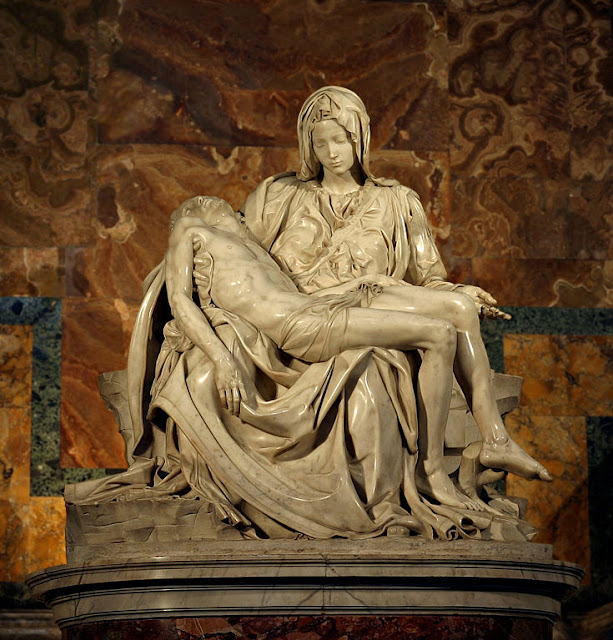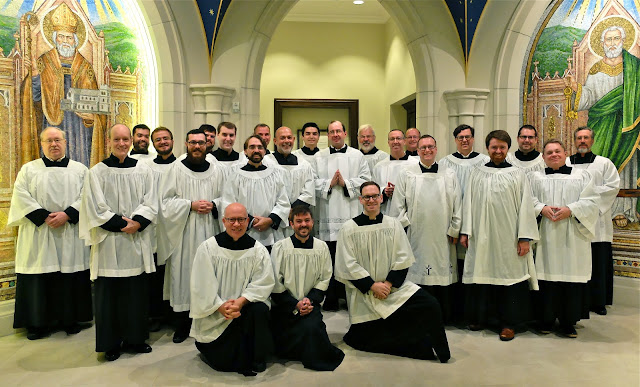Shrouded In Magnificent Mystery
From the information provided by Mr. Tony Cherniawski, from the Guadalupe Shrine site:
3) Did you know that evidence was taken from the Shroud that not only corroborates the Gospels, but much more:
Limestone dust has been taken from the Shroud that comes only from the northwest quadrant of Jerusalem near the Damascus Gate where Jesus was crucified, called Aragonite Limestone. This dust appears on the back of the Shroud where it lay on a limestone slab in the Tomb. The same dust appears on the cloth at the soles of His feet. Likewise, that dust appears on the right knee, mixed with blood, cartilage and particles of skin. The same dust appears at the tip of His nose, with abraded skin, which was broken. It also appears on a swelling on His forehead, indicating a probable concussion. In addition, there is a massive bruise on His right shoulder blade. This is evidence of multiple falls while carrying a heavy burden (Jesus fall three times, as told in the Stations of the Cross)
4) There are 58 varieties of pollens on the Shroud. 28 of them originate in the Middle East. 8 of them originate within 12-15 kilometers of the city of Jerusalem. The 8 flowers mentioned all bloom from late March to mid-April. There are three possible dates for the crucifixion. April 1, 29 AD, April 7, 30 AD and April 3, 33 AD in the Gregorian Calendar. Of those dates, a Lunar Eclipse (Blood Moon) and earthquake both occurred on April 3, 33 AD.
5) Coins were placed over the eyelids of the Man in the Shroud. These were identified as Julia Leptons, minted by Pontius Pilate in 29 AD.
And, in case you're wondering about the connection between the Sudarium and the Shroud... .
The Sudarium of Oviedo
3: Coincidence with the Shroud
The sudarium alone has revealed sufficient information to suggest that it was in contact with the face of Jesus after the crucifixion. However, the really fascinating evidence comes to light when this cloth is compared to the Shroud of Turin.
The first and most obvious coincidence is that the blood on both cloths belongs to the same group, namely AB.
The length of the nose through which the pleural oedema fluid came onto the sudarium has been calculated at eight centimetres, just over three inches. This is exactly the same length as the nose on the image of the Shroud.
If the face of the image on the Shroud is placed over the stains on the sudarium, perhaps the most obvious coincidence is the exact fit of the stains with the beard on the face. As the sudarium was used to clean the man's face, it appears that it was simply placed on the face to absorb all the blood, but not used in any kind of wiping movement.
A small stain is also visible proceeding from the right hand side of the man's mouth. This stain is hardly visible on the Shroud, but Dr. John Jackson, using the VP-8 and photo enhancements has confirmed its presence.
The thorn wounds on the nape of the neck also coincide perfectly with the bloodstains on the Shroud.
Dr. Alan Whanger applied the Polarized Image Overlay Technique to the sudarium, comparing it to the image and bloodstains on the Shroud. The frontal stains on the sudarium show seventy points of coincidence with the Shroud, and the rear side shows fifty. The only possible conclusion is that the Oviedo sudarium covered the same face as the Turin Shroud.
And, in case you're wondering about the connection between the Sudarium and the Shroud... .
 |
| Sudarium/NCRegister Image |
The Sudarium of Oviedo
3: Coincidence with the Shroud
The sudarium alone has revealed sufficient information to suggest that it was in contact with the face of Jesus after the crucifixion. However, the really fascinating evidence comes to light when this cloth is compared to the Shroud of Turin.
The first and most obvious coincidence is that the blood on both cloths belongs to the same group, namely AB.
The length of the nose through which the pleural oedema fluid came onto the sudarium has been calculated at eight centimetres, just over three inches. This is exactly the same length as the nose on the image of the Shroud.
If the face of the image on the Shroud is placed over the stains on the sudarium, perhaps the most obvious coincidence is the exact fit of the stains with the beard on the face. As the sudarium was used to clean the man's face, it appears that it was simply placed on the face to absorb all the blood, but not used in any kind of wiping movement.
A small stain is also visible proceeding from the right hand side of the man's mouth. This stain is hardly visible on the Shroud, but Dr. John Jackson, using the VP-8 and photo enhancements has confirmed its presence.
The thorn wounds on the nape of the neck also coincide perfectly with the bloodstains on the Shroud.
Dr. Alan Whanger applied the Polarized Image Overlay Technique to the sudarium, comparing it to the image and bloodstains on the Shroud. The frontal stains on the sudarium show seventy points of coincidence with the Shroud, and the rear side shows fifty. The only possible conclusion is that the Oviedo sudarium covered the same face as the Turin Shroud.

.jpg)





Comments
Post a Comment
Your comments will be appreciated and posted if 1) they are on topic and 2) preserve decorum.
Stand by your word.